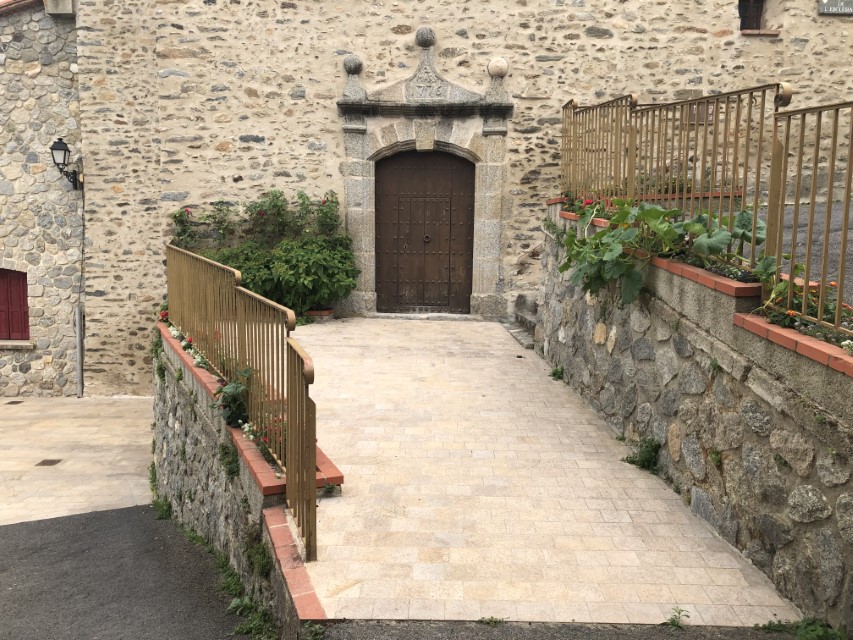
There is obvious architectural evidence from the past in Joch
The Força
That is to say the fortifications built around the dwellings and cellars surrounding the old castle, in the highest part of the village.
Only two portals and some outer walls of these fortifications can still be seen today.
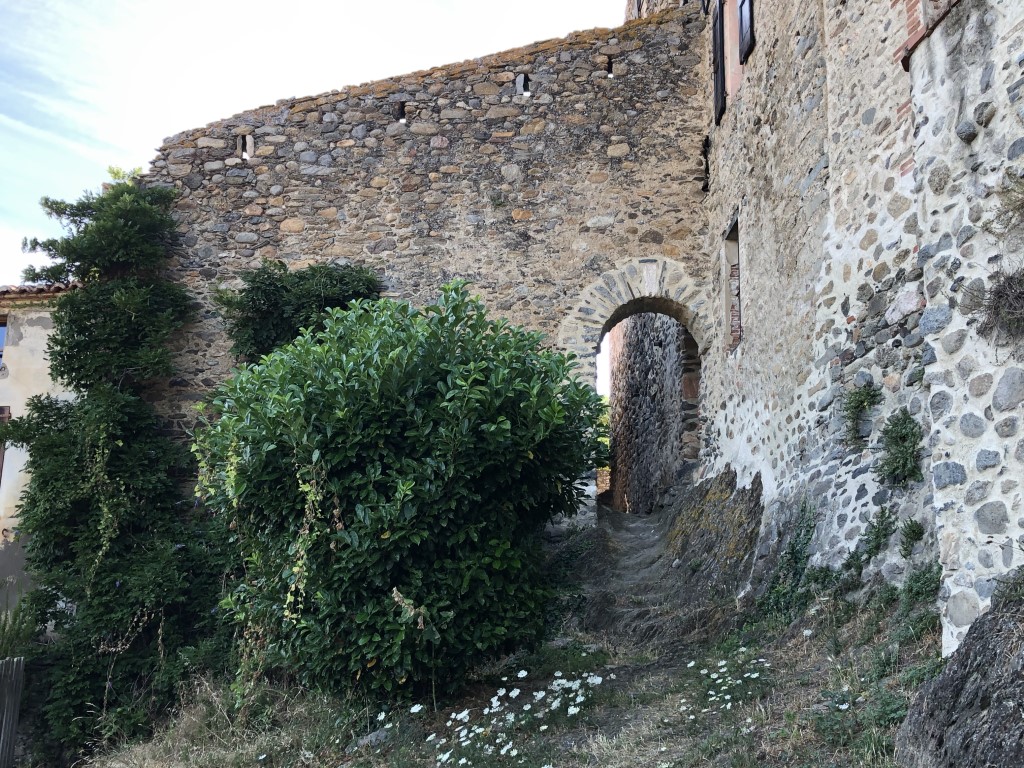
Porte nord-ouest 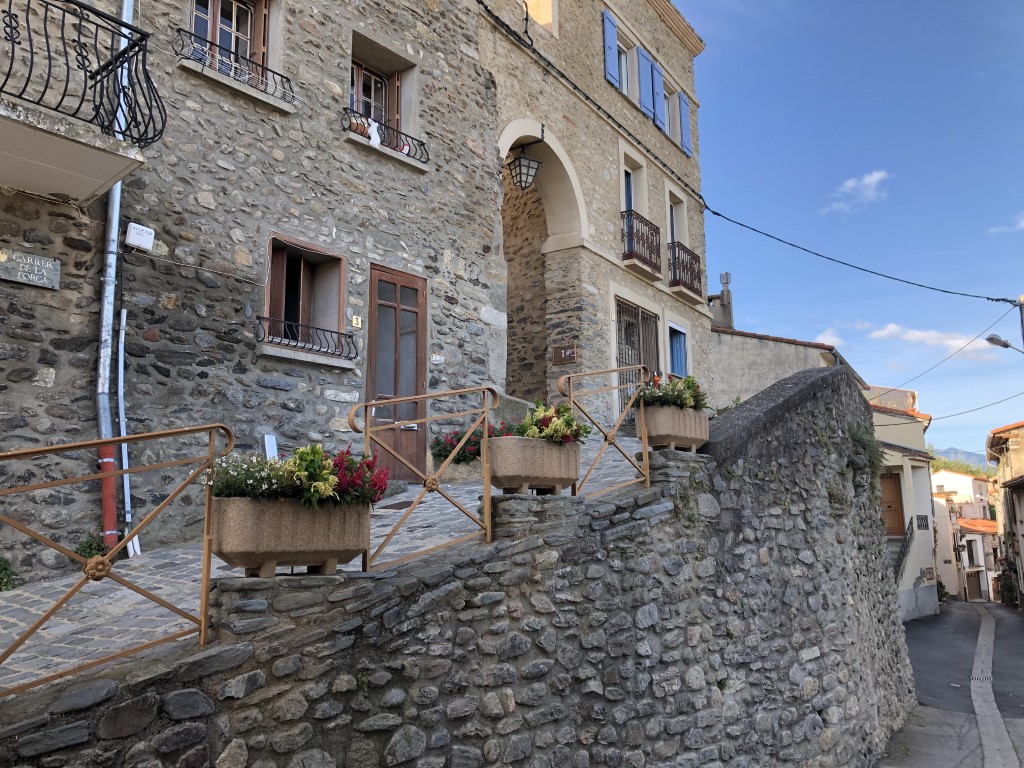
Porte nord de la Força 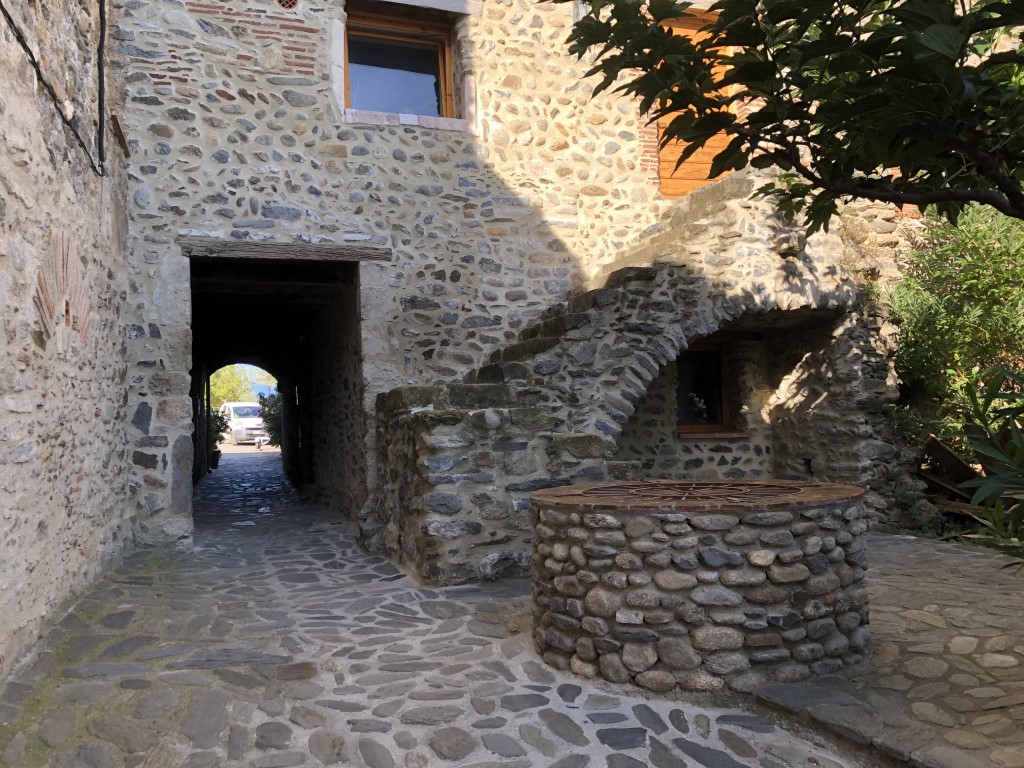
La citerne du château
The painted ceiling of the « cambra del rector » ( the priest’s room)
The current townhall is located in the old rectory .The secretary’s office is next to the room known as the priest’s room. In the past, the village priest was one of the most important people in the village. In the priest’s bedroom, a magnificent painted ceiling dating from the seventeenth century can be admired. The completion date of the paintings ( September 1693 ) can be read on the central beam of the room. At the top of the walls there are three drawings : one of a boat, another one representing an angler at the river Lentilla, and two drawings of the village.
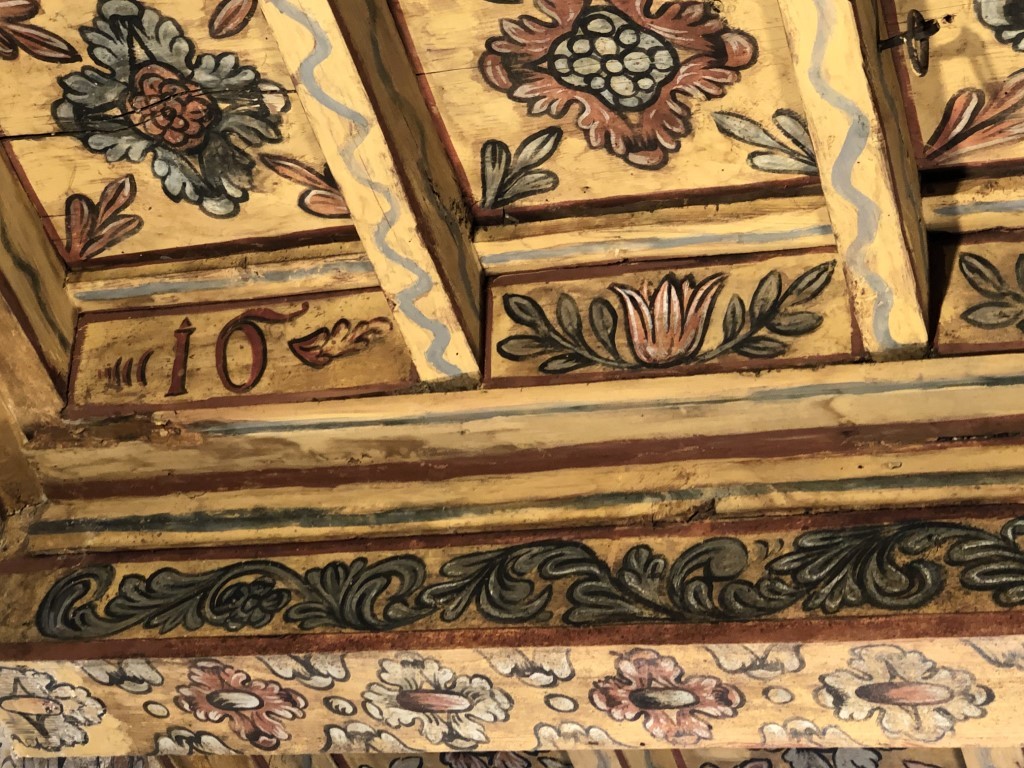
Début de la date : 16 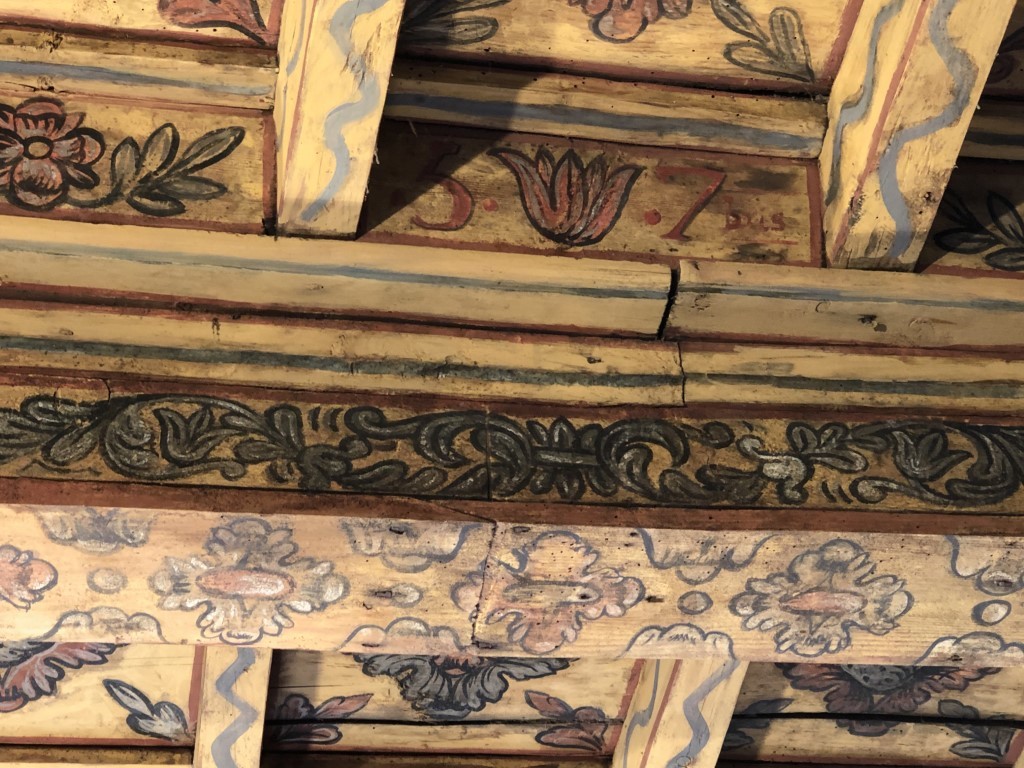
Milieu de la date (septembre ?) 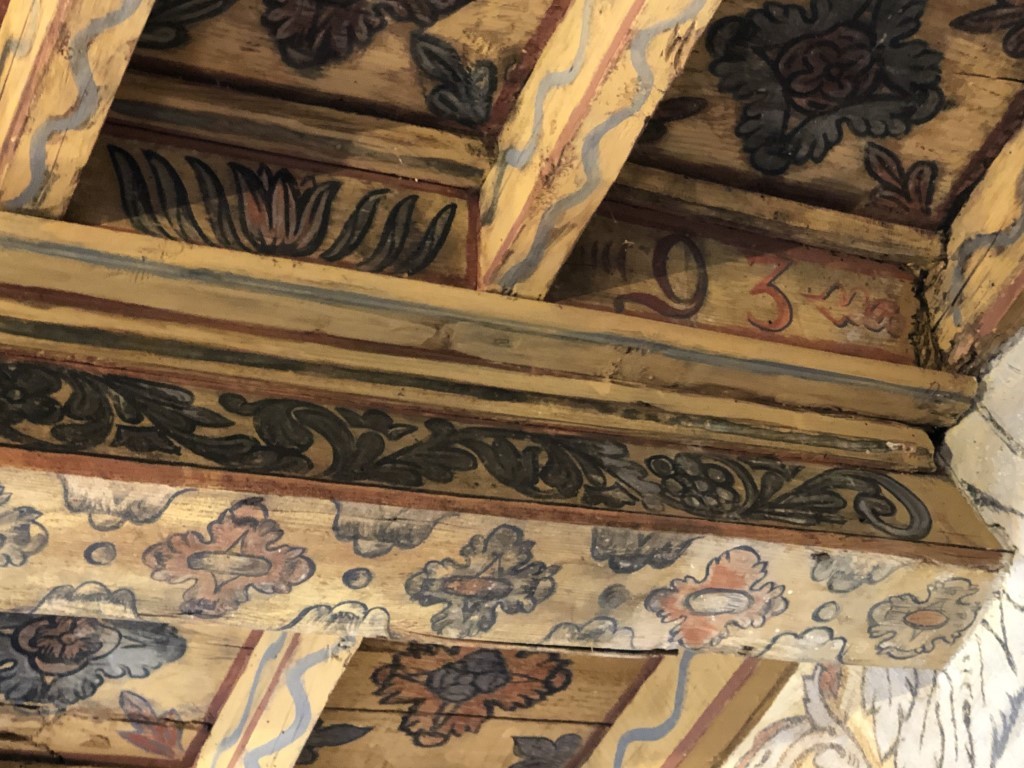
Fin de la date : 93 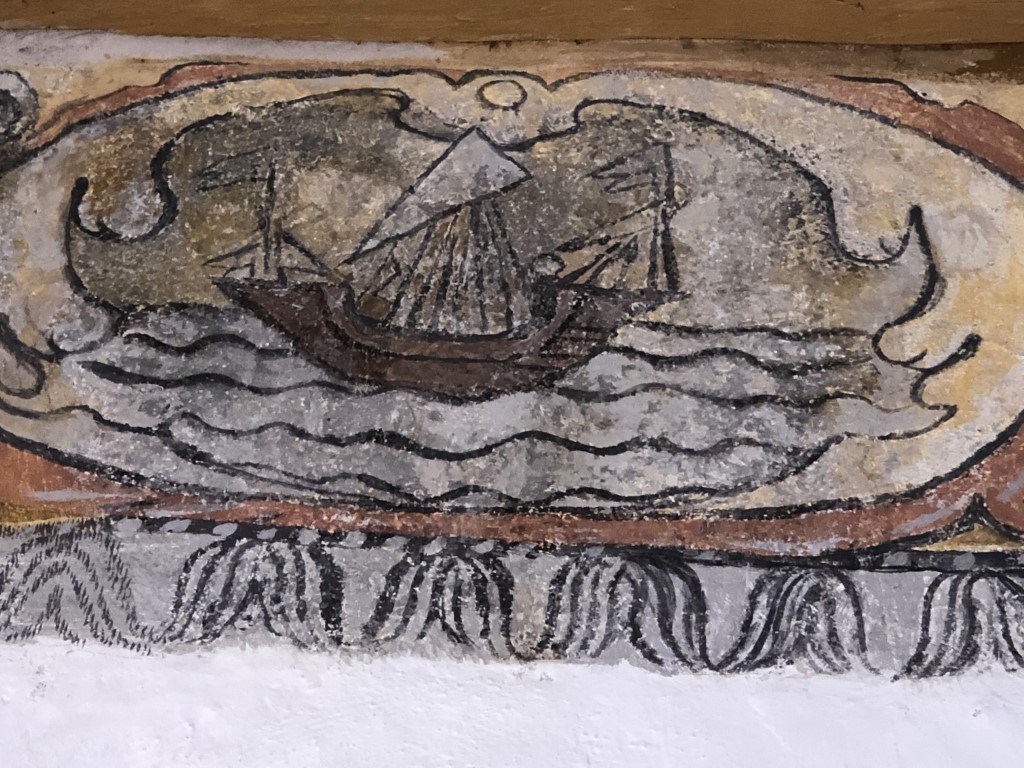
Le bateau 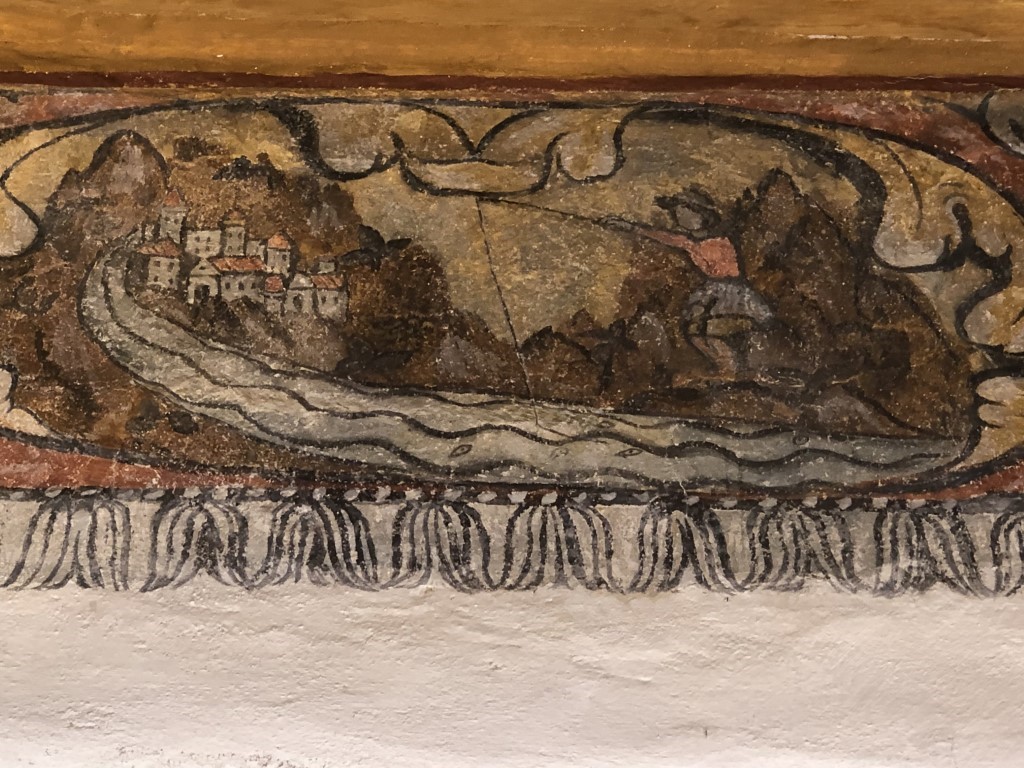
Le pêcheur de la Lentillà (?) 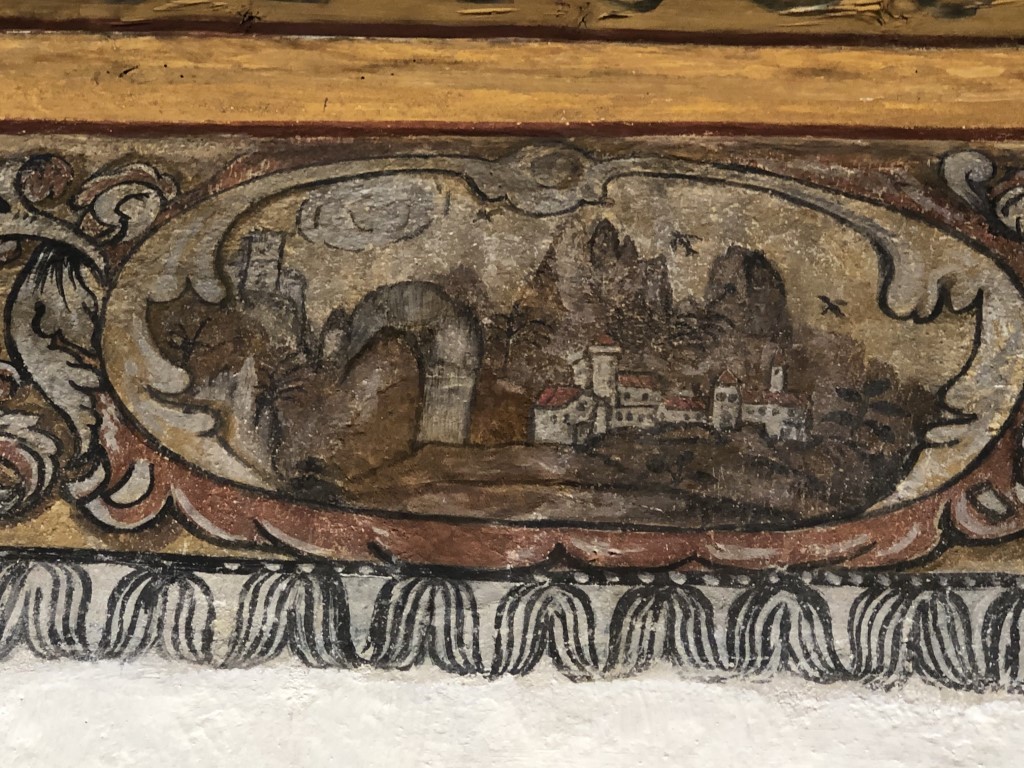
Le village 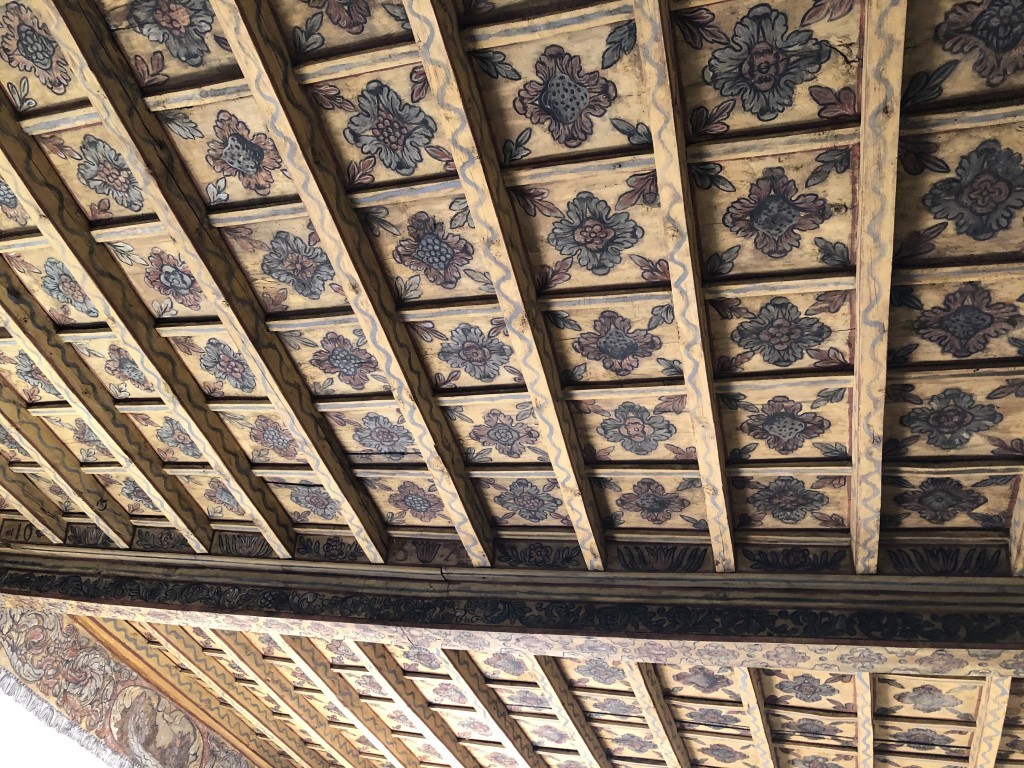
Vue générale 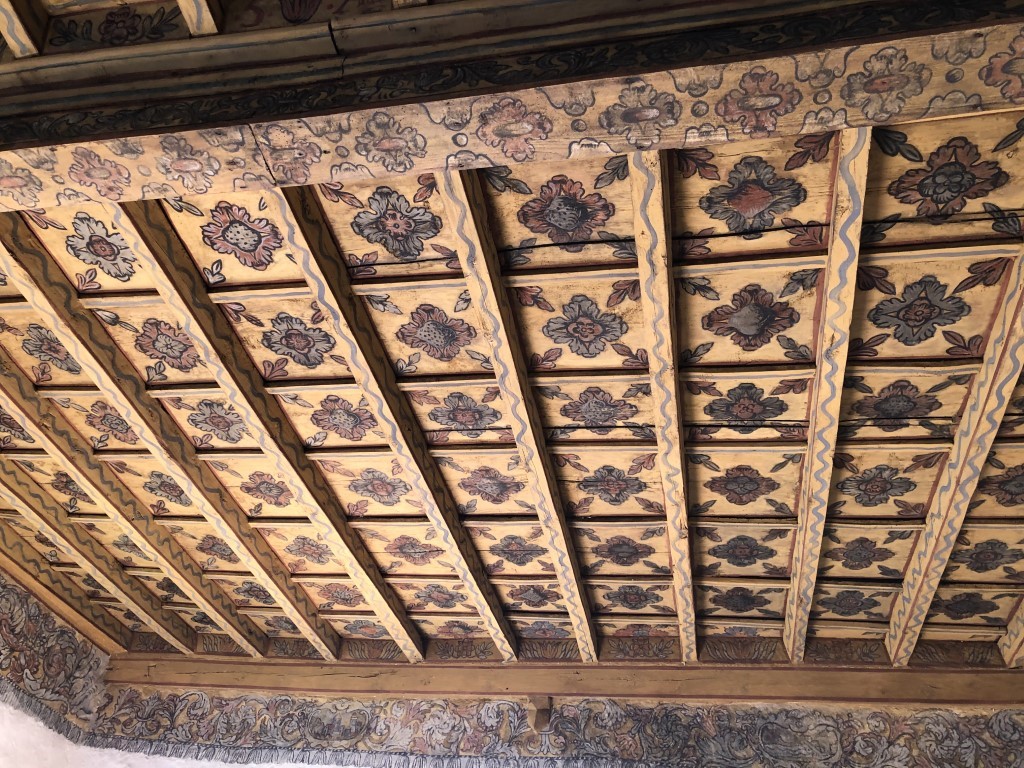
Vue générale
The church
Introduction
The current church dates from the eighteenth century. It is dedicated to Saint Martin like the ancient chapel located next to the churchyard which was a Roman chapel first mentioned in 1031. It had a vault where some Lords of the village and some parish priests were buried. ( see the page « history of Joch »). As it appeared to be too far away from the village and much too small, it was replaced by the current church in the eighteenth century. Hardly anything is left from this ancient church, because as tradition had it, its stones were used to build the new and current church.
Architecture
There is one nave only, ending with a square apse. There are six chapels on either side on the nave. Three to the north and three to the south. The Gothic style bay spans into five parts, each one of them has a brick ribbed vault with a granite keystone. On the back wall there is a gallery. The walls are made of stones joined with mortar.
Construction
The foundation stone of the church was laid on May 5th 1756. The construction lasted for twenty years, until 1778 (the date which is engraved on the keystone of the first bay).
The portal
The portal made of free stones is surmounted by three balls, one of which is made of marble. The date of March 2nd 1776 is engraved in one of the granite stones.
Inside the church
To the right, just after entering the church, you can see the Roman baptismal font, made in one block of pink marble of Conflent. It lays on a granite millstone. The holy water basin dating from the seventeenth century is also made of pink marble. They both come from the ancient parish church . In the alcove of the baptismal font, you will find an olive wood statue of Saint John, coming from Mas Roubi ( the hamlet below the old village, between Joch and Vinça)
There are several priceless baroque altarpieces in the church ( dating from the end of the sixteenth century, the seventeenth and the eighteenth centuries) :
First chapel to the right
Saint Hyacinth’s altarpiece, made by Honoré Rigaud, Louis XIV’s famous painter’s great grand father. This altarpiece was made in 1594 and comes from the convent of the Dominicans in Perpignan. The parish of Joch acquired it during the French Revolution. It is entirely made of painted wood. In the center, the Virgin Mary appears to Saint Hyacinth. To the right, Saint François of Assisa receives the stigmata.
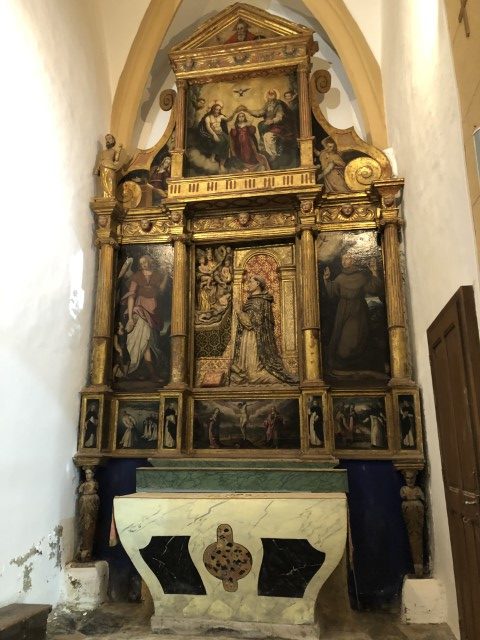
Retable de Saint Hyacinthe 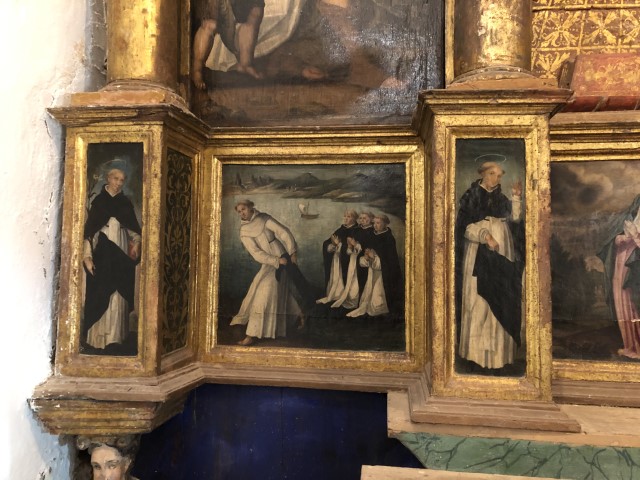
Miracle de Saint Hyacinthe 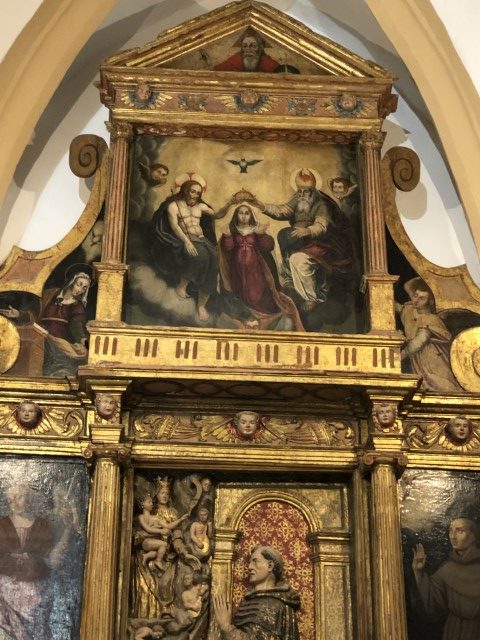
Couronnement de la Vierge entre Jésus et Dieu le Père
First chapel to the left
Saint Agnes and Saint Cecile’s altarpiece, also coming from the convent of the Dominicans. Made by a painter called Jean- Antoine Marti in 1623. The central statue represents Saint Benedict transformed into Saint Antoine ( who is worshipped in this chapel and celebrated in Joch every January 17th). This altarpiece is surmounted with the Catalan blazon.
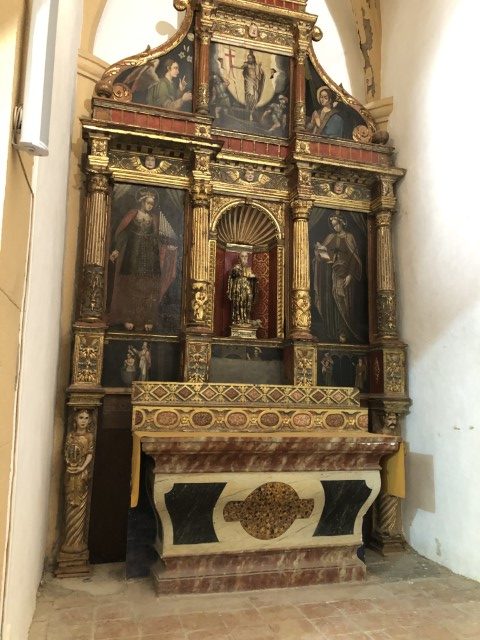
Retable des Saintes Cécile et Agnès 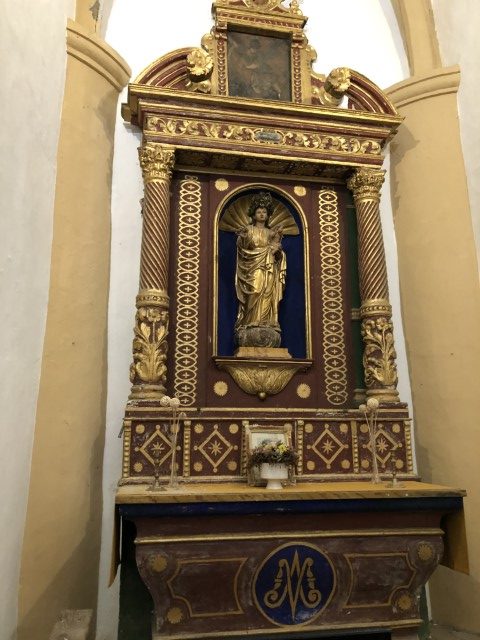
Retable de Notre Dame du Rosaire 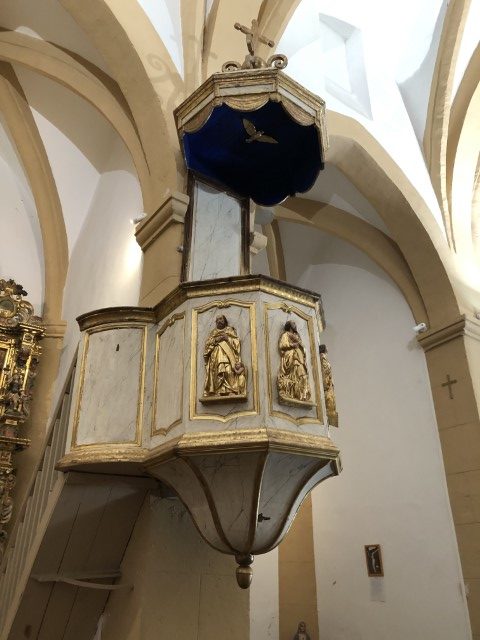
La chaire
Second chapel to the right
The chapel of the passion of Christ ( la Sanch). The only ornament is a beautiful baroque Christ on the cross ( 18th century). Four sculptered and gilded motives representing the evangelists decorate the chair.
Second chapel to the left
Contains the small altarpiece of the Virgin of the Rosary.
The « tabernacle of the Holy Thursday »
From Palm Sunday to Holy Saturday, in Joch as everywhere else, a series of ceremonies put rhythm into « the Holy week », preparing the christians for the celebration of Easter Sunday.
So, on Holy Thursday, « the monument » was set up in the church.
« The monument » was an ephemeral piece of decoration ornating an altar.
It served as a shelter for a specific tabernacle in which the wafers from the high altar were kept for a few days on that special occasion.
This so called « tabernacle of the Holy Thursday » had been dropped for years in a boxroom under the stairs leading to the bell tower. After being restored it has now just recovered its place in our chapel of the Sanch.
For it was in this very chapel that « the monument » had always been erected.
In Joch as everywhere else, « The monument » was always set up in the same way. In its middle, there was a staircase leading to the tabernacle of the Holy Thursday. Around the staircase, there were large and high pieces of decoration drawn in perspective to retrace the themes of the passion of Christ.
These pieces of decoration became obsolete and as they appeared to be cumbersome, they very often disappeared from our churches.
Nothing has been left from « the monument » of Joch except the tabernacle which was miraculously preserved .
The structure of this tabernacle is quite sophisticated with sculptured motives on its lines and on its vertical parts. There are five panes on its central part . One of them can be opened. The inside of the tabernacle is decorated with white stars on a blue background. The outside is painted white and lined with ochre- yellow and ochre – red dots, apart from the bottom and the top painted in a shade of green blue. There was probably a cross on top of the tabernacle but it has disappeared.
The tradition of « the monument » continued in Joch until the end of the twentieth century, but in a simplified and less « dramatic » form. On Holy Thursday, parish women used to set up a small staircase in the middle of the chapel of the Sanch. They covered it with white altar tablecloths, they put beautiful flower bunches on each step and a small tabernacle on top of that small staircase. This small tabernacle is now kept in the vestry.
On the same day, a few men from the village would come and take down the cross of Christ, which was the only ornament of that chapel of the Sanch. They put it in the vestry where it was left until Easter Sunday mass when crucified Christ was put back into his chapel.
Many thanks to the CCRP ( the local centre for the conservation and restoration of the patrimony) for their skillful job !
We also thank them for being kind enough to give us the beautiful base supporting the tabernacle.
Third chapel to the right
The altarpiece of Saint John the baptist comes from the ancient parish church. Most specialists think it was made by Joseph Sunyer ( the great Catalan sculptor who also made the altarpieces of Prades, Collioure…). It retraces several episodes of Saint John’s life in a pure baroque style ( the Baptism of Christ, the beheading…). The date of 1698 can be read on the banner behind the saint ( central statue)
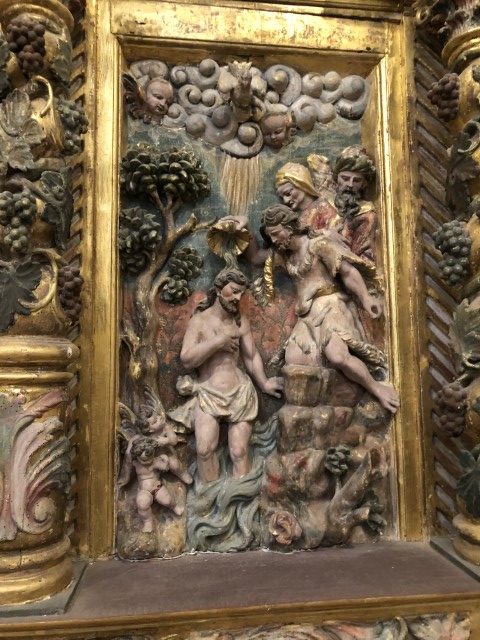
Saint Jean baptise le Christ 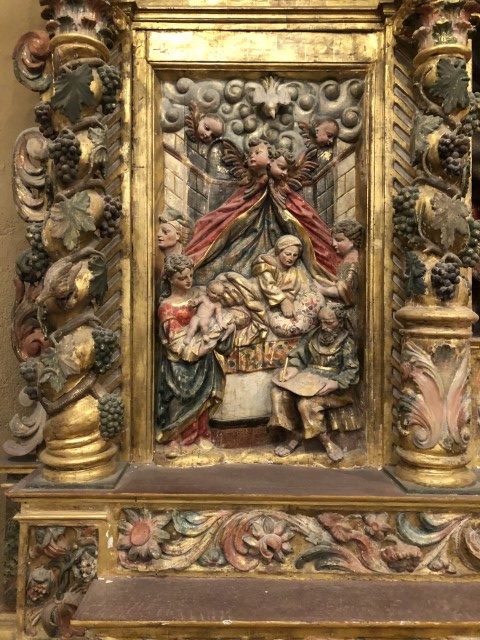
Nativité de Saint Jean 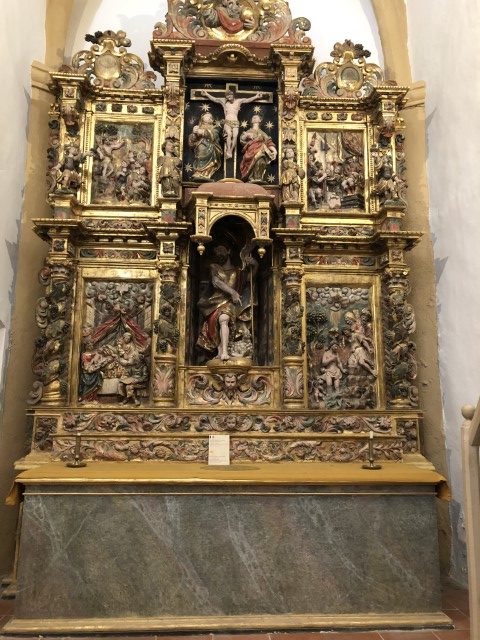
retable de Saint Jean Baptiste
Third chapel to the left
Saint Sebastian is worshipped in this chapel, but its altarpiece is dedicated to Our Lady of The Angels.
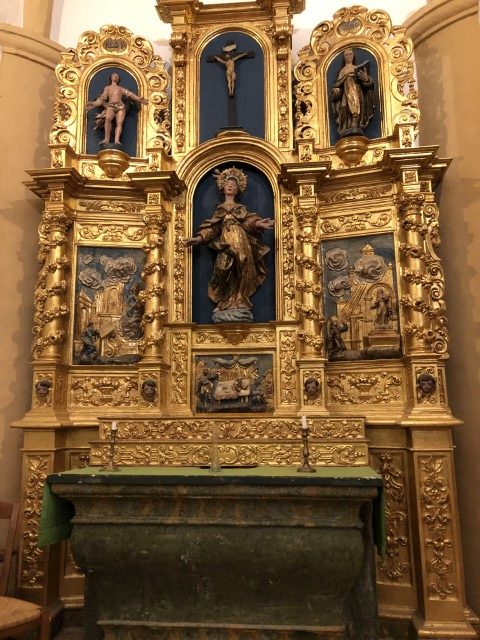
Retable de Notre Dame des Anges 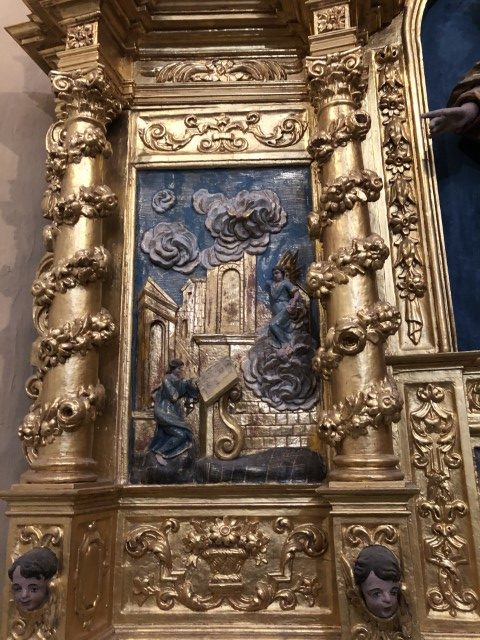
Annonciation de l’Ange Gabriel à Marie
High altar
Its altarpiece is dedicated to Saint Martin, the patron saint of Joch. It also comes from the ancient parish church and is dated from 1728. It is a baroque piece also very probably made by Joseph Sunyer.
Many scenes of the saint’s life can be admired. In the center, there is the statue of Saint Martin as a bishop as it is celebrated on November 11th, on the right the statue of Saint Gauderique ( Galdric in Catalan), the saint protecting the farmers. On the left, the statue of Saint Joseph is a recent copy of the original polychromatic wooden statue. This new statue was partly financed by the association named « pa, vi i molto » (bread, wine and sheep) from our twinned city of Calella in South Catalunya.

Saint Martin 
Le maître autel 
Saint Joseph portant l’Enfant Jésus
Guided tours
You can contact :
Mr Gérard GENSANE , 17 Carrer Major in Joch ( tel 06 83 10 09 43)
for a guided visit of the church ( approximately 1H30) or / and a guided visit of the village ( approximately 2H)



